Transracial and Multicultural Adoption Guide
“You are the sum total of everything you’ve ever seen, heard, eaten, smelled, been told, forgot—it’s all there. Everything influences each of us, and because of that I try to make sure that my experiences are positive.” – Maya Angelou
As in choosing any type of adoption, choosing transracial adoption requires intense research and a lifelong commitment — but it can be a wonderful experience for adoptive families. transracial adoption exposes parents and children to new cultures and brings diversity into the home. Whether you’re looking into domestic or international adoption, the following slides will pose questions, offer suggestions, and provide links to helpful information about transracial adoption.
Are you considering growing your family through domestic infant adoption? For a free and confidential consultation with an adoption professional, click here.

1. What is Transracial/Multicultural Adoption?
According to the Child Welfare Information Gateway, “Transracial or transcultural adoption means placing a child who is of one race or ethnic group with adoptive parents of another race or ethnic group. In the U.S. these terms usually refer to the placement of children of color or children from another country with Caucasian adoptive parents.” However, it is not totally unheard of for other races to adopt Caucasian children.
Typically, transracial adoption is the placement of children from the following ethnic backgrounds: African American/Biracial, Hispanic/Latin American, Asian, and Native American. Additionally, some families choose international adoption, opening up their homes and hearts to children from Eastern European, African, Asian, and South American countries.

2. Look Before You Leap
Before you can prepare for a transracial and/or multicultural adoption, you should fully understand what it will mean for your family-to-be.
Once you have made the decision to pursue a transracial and/or multicultural adoption, your adoption agency and social worker should point you in the direction of helpful literature, websites, and local support groups dedicated to preparing and educating families on what to expect when welcoming a child of a different racial community into your home.
For help in deciding if international adoption is for you, click here. For more information on the international adoption process, click here.

3. Historically Speaking
As recently as 1972, the placement of black children in white homes was widely criticized and discouraged by the National Association of Black Social Workers (Source: The Adoption History Project). And while the 1994 Multiethnic Placement Act made it illegal to discriminate in adoption because of race, the debate concerning transracial adoption isn’t over and isn’t limited to black and white.
Although the face of America has changed as interracial marriage has become commonplace—resulting in more biracial children and mixed-race homes—there are many conflicting viewpoints on transracial and multicultural adoption and, depending who you talk to or which website you visit, you may come away with a drastically different take.
Find more information on transracial adoption laws here.
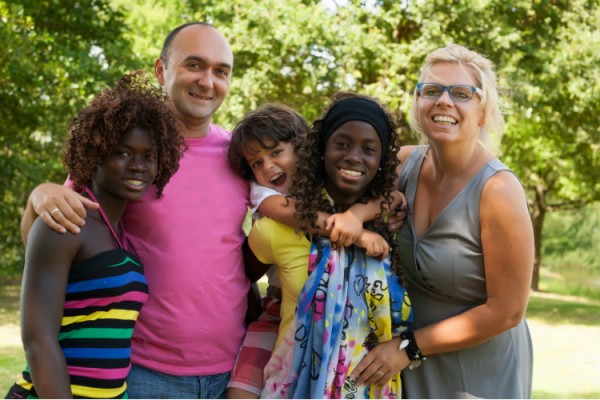
4. Differing Opinions
While transracial and multicultural families are quite common (Statistics Brain lists the percent of domestic transracial adoptions in the US 2013 at 40%), some people still feel that it is not always in the best interest of the adopted child. On the other hand, there are just as many advocates who insist that children raised in a loving and nurturing environment will thrive no matter the differences.
International adoption also remains an option for many adopting families, although numbers have declined in recent years due to changing international laws, as well as economic issues here at home. Although many adopting families still consider this route their first choice, some groups argue that countries/governments should maintain and take care of “their own.”
Still, others feel that any home with a loving parent, despite ethnic differences, is better than leaving children in overcrowded orphanages or to fend for themselves on the streets, especially in countries where domestic adoption rates are low due to poverty and unsafe conditions. While the great debate rages on concerning transracial adoption, the need to place children of every race is very real.

5. Be Resourceful: Online Help
Having good resources is key to any successful adoption. Most reputable adoption agencies will require you to fulfill a certain number of hours to become “certified” to adopt transracially or internationally.
Websites like Adoption Learning Partners is one of several online forums that offers an array of interactive e-learning (and sometimes required) courses to help adoptive parents understand and prepare for the challenges that come with adoption.
Visit our Adoption forums to learn more from others about transracial adoption.
You can also see hopeful international adoptees on our online photolisting.

6. Be Resourceful: Active Research
While courses like those at Adoption Learning Partners are a great warm-up exercise, you should plan to run a research marathon of your own before, during, and after your adoption is finalized. Understand that you are not the first family to go this route and there is an abundance of information on any given topic that may help you make sense of or answer questions that you had not previously considered. So take a deep breath and remember to:
– Avoid information overload. Ask for your agency and/or social worker to provide proven and suggested materials to help identify and answer everything you never knew you wanted to know about adoption.
– If you’re adopting internationally, make contact with the international agency or orphanage and ask about your child’s current health situation, living conditions, and medical conditions so that you can research and prepare accordingly.
– Go to the source. Reach out to others in your community who are in the process of and/or have adopted or fostered transracially/multiculturally. Not only will they be a helpful resource while you prepare to adopt, they can serve as a great source of support to your family down the road.
– Ask your agency for a “buddy couple” or family who knows the ropes and can help you to sort through the adoption process and familiarize you with issues you’ll be sure to face.

7. Your Support System: Family, Friends, and Local Support
Parenthood is no easy task. With adoption comes additional responsibility, and when you add in elements of transracial and multicultural adoption, you will feel overwhelmed trying to figure things out on your own. Ideally, your family and friends should serve as a support system, but often adoptive parents find themselves feeling the need to reach out to others who have “been there and done that.”
In addition to your adoption agency, do your research and find out if there are local groups that will provide support to both you and your child. Although transracial and transcultural families are no longer few and far between, it’s a good idea to seek out friendly faces in your area, bloggers, social media, events, educational camps. If you’re unable to find one, check a local online mom’s group and put out some feelers to see if there is any interest in starting a playgroup or support group.
Try searching our Adoption Forums to find support groups in your area.

9. Your Support System: Professionals
Make sure to research professionals in your area, including pediatricians, before you bring your child home. Whether you are adopting an infant, a child, or a teenager, ask around to find professionals who are familiar with different ethnicities/cultures. Your pediatrician will be your partner in crime in ensuring your child’s physical and mental health, so they, too, should be familiar with transracial/transcultural adoption issues.
Research your school district. Know the ethnic ratio of students. Reach out to administrators and teachers. Familiarize yourself with the school’s resources, including clubs and support groups available to your child.

10. The Family Plan: Extended Family and Friends
Don’t assume that just because you have done your research that your family and friends will be aware of your concerns or that they will be as enthusiastic to dedicate the same amount of time researching and planning.
You may not want to announce your adoption plans with just anybody, but you should share with your close circle, especially those who may serve as caregivers, such as grandparents, to ensure they are aware of the unique circumstances surrounding your child’s adoption and how they, too, can help to make the transition an easier one for your child, siblings, cousins, etc. Provide websites and links to information they may wish to pursue on their own.
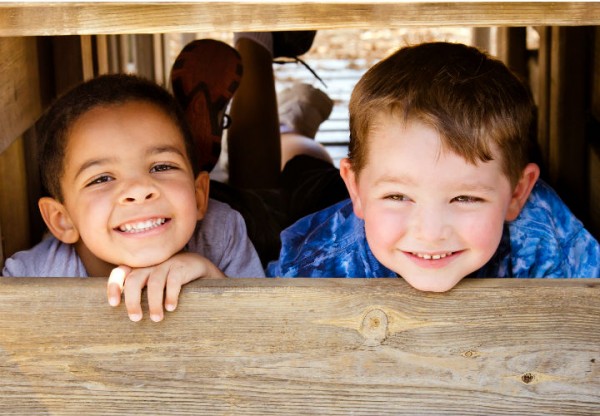
11. The Family Plan: Your Children
Children will be excited, confused, and, in some cases, upset to hear about an adopted sibling regardless of racial or ethnic background. You’ll want to start a dialogue well ahead of the adoption and work with your social worker for advice regarding how to bring your child into the conversation, as they will take part in your home study. Encourage them to ask questions. Talk about race, age, cultural differences, and other issues and concerns your child may bring up. Keep it age-appropriate, but make sure to talk about them!
Read books, watch videos, and keep the lines of communication open before, during, and after the adoption. As with any change in family makeup, an adoption will change the dynamic of your household and your children will need reassurance regarding their role in the family and what part they will play in welcoming a new child into the family. As with any siblings, children are sure to have ups and downs.

12. Before Home Sweet Home: Intercultural Preparation
They say that home is where the heart is. Home is more than a place, it’s the place where you’re going to become your child’s forever family. Preparing a welcoming environment for a transracial child will help her to feel accepted and encourage her to feel like she belongs, rather than feeling like merely a visitor on the scene. Consider putting out simple décor or artwork, music, books, or toys that your child may identify with.

13. Before Home Sweet Home: International Prepartion
If you are adopting internationally, this may be especially important. Look around your house. Even if your child is past infancy, you may want to do some “baby proofing” for a child who may be coming from an orphanage and has never experienced what we take for granted. Everyday items and some situations are going to be new to her and can pose a danger, especially if there is a language barrier.
Be prepared for some adjustment to a new environment. Talk to your adoption agency, your social worker, and ask your child’s previous caregiver for her schedule so you can help her adapt to her new surroundings regarding mealtimes, sleep, and play.

14. Ready, Set, Grow!
“Knowledge is power.” – Francis Bacon
Be ready to have open and honest discussions with your adoption agency. Ask lots of questions. Are you ready to adopt a child of a different race or from a different country who looks, sounds, or acts differently than you do? It’s important to share any concerns or fears you may have in order to be prepared to support your child with any emotional or physical needs he may have growing up in a transracial/multicultural home and community.
Don’t be afraid to read things that contradict what you may think or feel about transracial adoption. Racism and cultural discrimination are very real, and glossing over these issues is a big mistake. Read books about transracial adoption and familiarize yourself with your child’s culture. Ensure that your child grows up in a home and community where he feels understood and accepted.
Read more about creating a comfortable environment for your adopted child here.

15. Hands-on Experience
If you’re adopting internationally, chances are you’ll be spending some time in your child’s country of origin while you finalize the process. Take pictures and keep a journal. This is a great opportunity to take part in tours and learn firsthand about their culture. Include this in their life book.
There’s no law that says you can’t do the same domestically by interacting with ethnic groups in your community. Chances are, they will be happy to share with you customs and stories that you can pass along to your child.
Being “ready” doesn’t mean that you need to have it all figured out—it simply means that you should do your homework and anticipate a few curveballs along the way.
For more tips on adoption travel, read other stories here.

16. Ducking Curveballs
“Hmm, let’s see now. Something’s amiss here. Hmm… I’ll run through it. “Ho, ha ha, guard, turn, parry, dodge, spin, ha, thrust.” – Daffy Duck
Should you choose to adopt transracially or multiculturally, get ready to do some guarding, turning, parrying, dodging, and spinning of your own.
For a child coming from abuse, poverty, a constant rotation of foster care, or an orphanage—even if the child is coming from a nurturing environment—the transition to your cozy little home has been likened to a Martian visiting earth for the first time. Chances are, no matter how prepared you may be, your child has not had the same opportunity to prepare.

17. Ducking Curveballs: Your Child’s Support System
Be ready to be your child’s support system through the good, the bad, and the ugly—and rest assured there will be plenty of all three. Keep your eyes and ears wide open and be ready to help your child navigate a strange new world, with strange new faces, smells, tastes, sounds, rules, and surroundings. As wonderful and happy as adoption can be, we must also recognize that adoption is confusing and uncertain for a child, especially for a child of another race or culture.
Reach out to other transracial or multicultural families with children of the same race or ethnicity to help put your child at ease and to identify certain issues you may not otherwise anticipate. Ready your home to make it welcoming by bringing in items that may seem familiar to your child. Research ethnic dishes and have age-appropriate books or videos on hand that they may be able to turn to if they are not yet comfortable opening up a dialogue with you.

18. …and Thrust! Embracing Your Child’s Culture
Stepping into the unknown can be a scary experience, but being open to learning and change is what life is all about. Be ready to put yourself out there. While there will be a lot of heavy duty changes taking place, not all of them need to feel confusing or overwhelming. Embracing your child’s race and culture can be fun and will enhance your family dynamic, while helping to support your child’s self-esteem. Just as you will expect your child to learn about her community or new country, it is just as important (if not more so) for you to learn about and incorporate your child’s origin and traditions.
While you will be learning things as you go, you will also become your child’s teacher. Exploring and embracing new things together may just prove to be the glue that will provide opportunities to bond with and make your family a strong one.
Consider joining a playgroup with other transracial families. Bring in as many toys and books as you can find that your child will relate to. Many popular toy manufacturers carry ethnic dolls, as well as products geared toward various races and ethnicities.
Research holidays and history—go online for ways that your family can celebrate important dates and to find theme ideas for birthday parties and milestones in your child’s life. For international adoptions, find out who’s who in your child’s birth country. Follow actors and athletes and encourage your child to cheer for them during special events such as the Olympics.
For more information on how to embrace your child’s culture, check out these articles:
The Significance of Racial Identity in Transracially Adopted Young Adults
Becoming a Multicultural Family
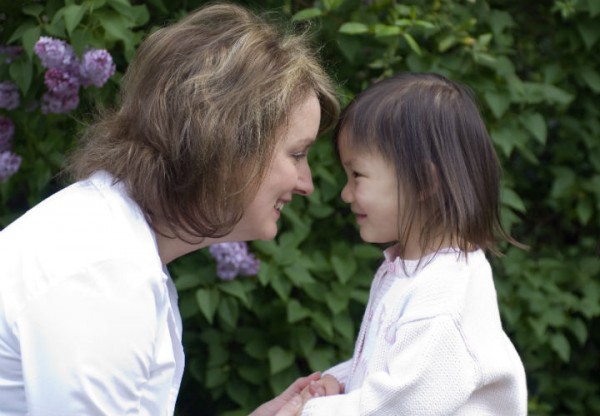
19. Let’s Talk About It
We all have heard the advice that communication is the key to a good relationship. Make sure that you keep open lines of communication with your child. Be prepared to learn together. Really listen to your child. Make sure he knows he is free to speak openly and without assumption or judgement. Don’t try to analyze every word he says or anticipate how he will react, but instead let him voice his feelings and respond accordingly.
Talking it out is healthy and will help to build a stronger, more confident child. This is a great opportunity to learn about your child’s native country, traditions, and customs.
To learn more about the importance of communication, click here.
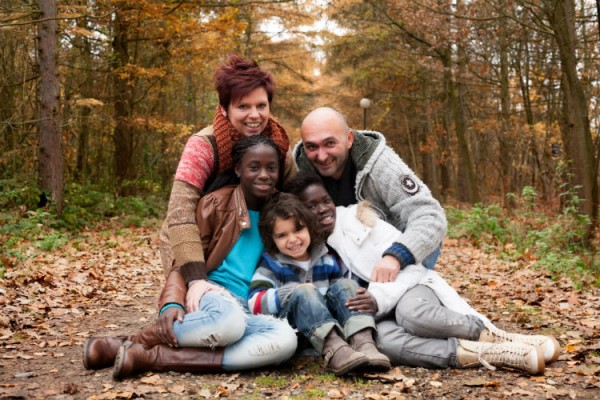
20. Different, but the Same
Just as it’s never too early to bring your child’s adoption story into the conversation, it’s also never too early to touch on issues of race, color, and cultural differences. In some cases, your child will notice—or their friends will soon enough point out for them—that she “doesn’t match”.
It is important to understand and respond to your child’s questions. Keep your conversations age-appropriate. Wait for your child to pose a question they may have and keep your answer simple. If they want to know more, they will continue to ask you questions.
Provide safe opportunities that may lead to conversation. Use pictures, books, movies, or age-appropriate toys that will help your child to feel comfortable and secure. Additionally, you will want to speak to your immediate family and friends to let them know how they can and should respond. Assuming others will know how to speak to your child about her adoption or any related issues is a big mistake.

21. Racism: Responding to Others
While some families report no problems related to race or ethnic background, others quickly learn to respond to sometimes-unwanted attention. You should expect some strange looks, stares, and random and inappropriate questions and comments. To think these things will never happen to you is naïve at best. We’ve all read articles where an adoptive parent vents about rude questions or comments they’ve encountered in a grocery checkout line. While this can be annoying and awkward, there are many ways to react in a positive manner rather than feeling attacked.
Inappropriate questions are not limited to transracial adoptive families and showing your child from an early age how to appropriately deal with others may someday actually work in their favor. Check out our Adoption Forums to see how other adoptive families respond. Additionally, this is another good reason to reach out and make new friends with people of the same race as your child.

22. Racism: Your Child’s Self-Esteem
Talking about race is not racist. It’s true. There is no denying different skin color or features such as the texture of African American hair, which can be a mystery to someone not used to working with it. Not acknowledging our differences may send out the message that it’s something that you feel uncomfortable talking about and, in turn, your child may not feel comfortable bringing it up with you.
What’s more significant than worrying about what outsiders think or feel is acknowledging what your child will most certainly think and feel. Today, grown adoptees are speaking up about their experiences in transracial homes and what it’s like to be the odd man out in their community.
Check out this article on the racial factor in adoption for tips on what to talk about and how to talk about it with your child. Reach out to experts and friends in your community with whom your child might feel comfortable.
You can also learn more about nurturing your child’s identity by watching these videos:
Transracial Adoption: A Family’s Experience and Advice to Those Considering Adopting Transracially
Transracial Adoption: An Adoptee’s Perspective

23. Identity is Everything: Your Child’s Culture
“Nothing can dim the light which shines from within.” – Maya Angelou
Everybody likes to know that they are OK, that they fit in, that they are not weird. Of course, all kids go through awkward phases and feel out of place for various reasons. For transracially and/or multiculturally adopted kids, you can imagine these phases may be extra confusing.
Questions are good! Let your child know that you are comfortable with their adoption and they will follow your lead.
Talk about traditions he may be interested in continuing as an individual and as a family. If you adopted internationally, do your research. Help your child to learn about his homeland. If you spend time in his native country, make sure to take plenty of photos, spend time taking in the community, eating the food, learning about the culture. Bring home souvenirs. Consider putting together a scrapbook or life book to share with your child.

24. Identity is Everything: Your Child’s Story
As a parent, you can provide an environment where your child feels safe discussing adoption issues, including their birth family.
Repeat their adoption story over and over again so that they understand how important it is to your family, but remember that it didn’t’ start with the day they came into your life. Your child’s history includes her birth family. There should be no shame attached to her past or where she came from. You should encourage your child to feel comfortable in her own skin and to be proud of who she is and where she comes from. Building self-esteem early will have long-lasting effects.

25. So Many Questions: Be Ready to Respond…or Not
Whether or not people ask questions, be ready with answers and, without being pushy, provide opportunities to open discussions on the spot or down the road. Remember that your child’s adoption is his story to tell. Your child’s history is his to share. While it’s going to come up in conversation with family, friends, co-workers, educators, etc., the bottom line is knowing that you are not obligated to respond to personal questions regarding your child’s background, race, ethnicity, biological family, or why you chose transracial/multicultural adoption.
Consider who is asking the question. If it’s a stranger in a grocery store checkout line, feel free to smile, nod, and ignore. Family members may want to know more. Consider how important these details are to your child’s/their relationship. You don’t need to share everything, just as they don’t necessarily share every bit of their private life with you. Consider what pieces of information may help and what pieces you should keep private out of respect for your child.
Kids are curious. Your child’s classmates also may ask questions. Again, remember to honor your child’s privacy and allow them the opportunity to open up if and when they feel comfortable doing so. If your child chooses to talk about their adoption during show and tell, you may want to give their teacher a “heads up” so they can support and assist if needed.
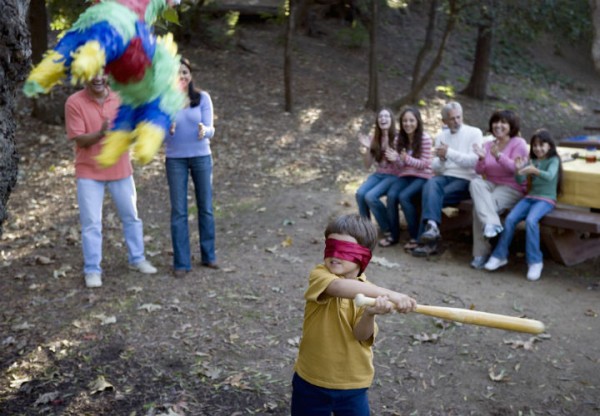
26. Celebrate!
Transracial/multicultural adoption opens all sorts of doors for you to learn about the traditions and customs of your child’s ethnic background and/or birth country. Not only can this be interesting and fun, but it also helps children feel connected to and proud of her birth culture. It serves as yet another opportunity for her to develop her own identity.
Chances are, she may someday decide to visit the place of her birth, and making sure she knows where she comes from, including traditions, language, and customs will be incredibly important to her as an adult searching for her roots.
Research birthdays, holidays, religious events, and encourage your child to learn right along with you. Consider making some of these traditions part of your lives together.

27. Be Aware
Make sure to experiment. Just because his country is known for this or that dish doesn’t mean your child is going to love it. He may prefer American cuisine to that of his homeland. Still, it doesn’t hurt to try and it reinforces your commitment to supporting him throughout his life.
Some families celebrate what is called “Gotcha Day” or the day their family became one. While some adoptees are okay with this special attention, others express a desire to not make light of a day that for some can also signify a day of loss or painful memories. Talk to your child to ensure they are comfortable with adoption celebrations.
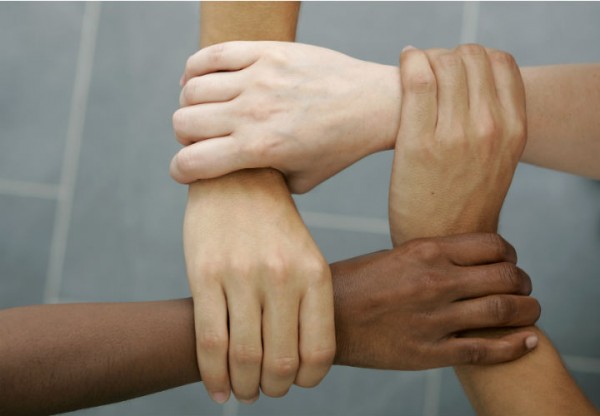
28. Keep in Touch
Adoption is a lifelong learning process. Although a loving home is the goal for every child in need or want of a family, the goal of the adopting family should be to maintain a connection to their child’s heritage.
In order for any of us to move forward in our lives, it’s important to know where we have been and the unique properties that make us individuals within our family as well as our community. And while it’s reassuring to a child that we share similarities, it’s also important to recognize and celebrate our differences.
Your toddler of today will be your adult child of tomorrow. Encouraging her to learn about and keep touch with her roots and ethnic background will serve as a healthy platform from which she can grow up confident and secure in her identity.







